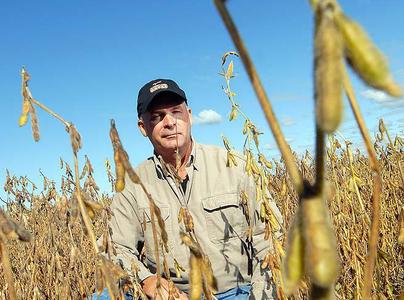
Dave Ferguson grows mostly corn and soybeans on his 364-hectare farm.
Follow the flow of food. That's what any farmer will tell you. Because apples don't grow in supermarkets.
So to get to the root of the exploding obesity epidemic, I went in search of a junk food farm.
Such farms are not so easy to spot. No fields of Dorito bags waving in the breeze, no orchards blooming with soda pop, no soil bursting with 99-cent burgers.
What you do see are vast operations growing the raw materials for junk food: soybeans and corn.
The two crops go into the production of many things: pharmaceuticals, industrial products, animal feed - and inexpensive calories.